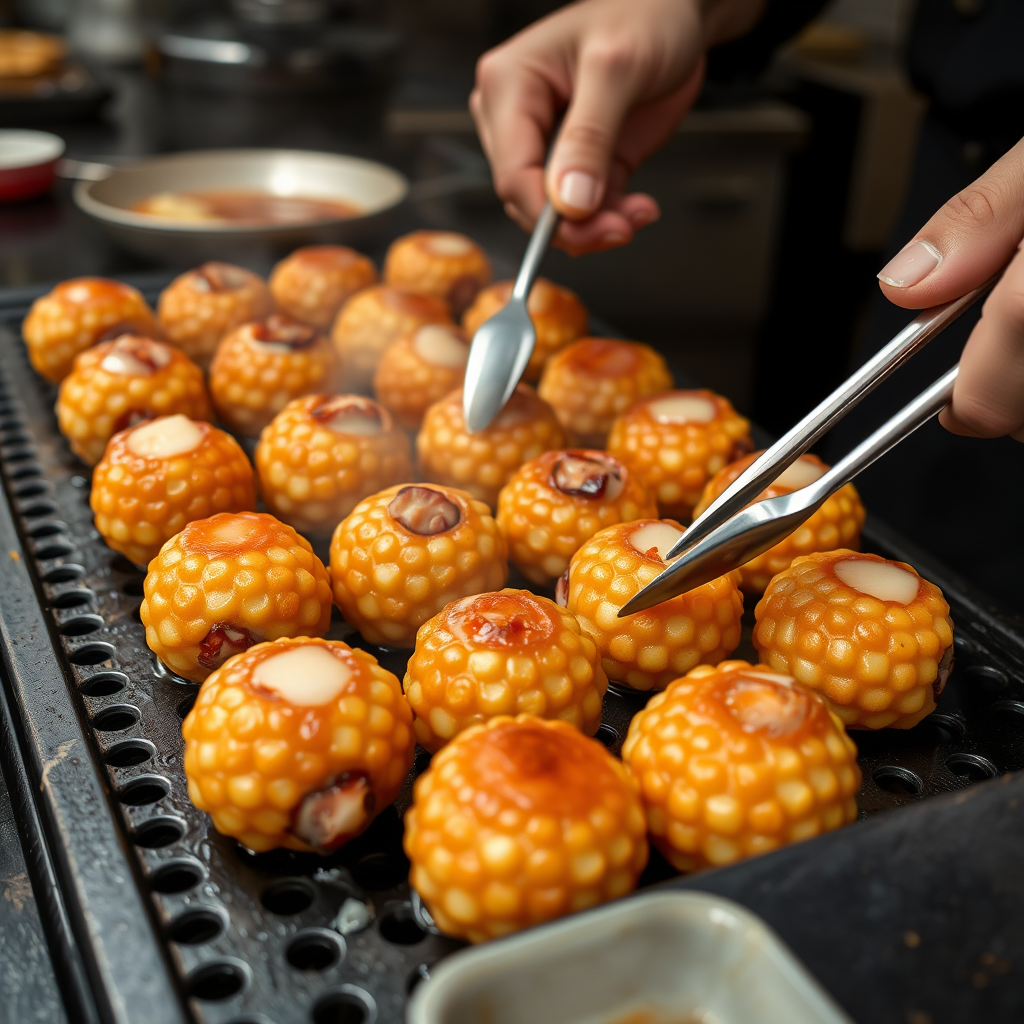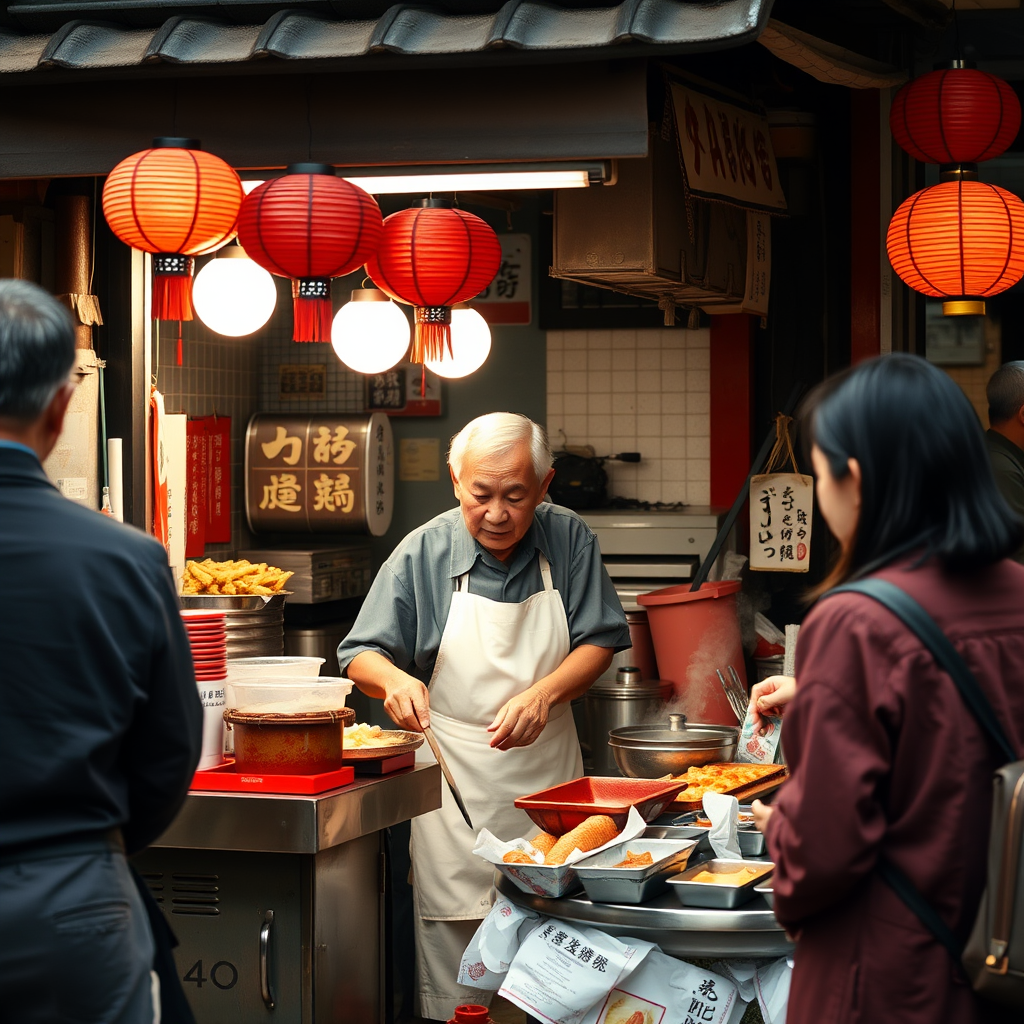Culinary Adventures: Street Food Treasures of Tokyo

Tokyo's street food scene is a sensory explosion that captures the essence of traditional Japan while embracing modern culinary innovation. From the bustling alleys of Shibuya to the historic streets of Asakusa, every corner offers a new taste adventure waiting to be discovered.
The Art of Japanese Street Food Culture
Street food in Tokyo isn't just about quick meals—it's a cultural experience that reflects centuries of culinary tradition. These portable delicacies have been feeding busy city dwellers since the Edo period, evolving from simple rice balls to the diverse array of flavors we see today.


Shibuya's Savory Sensations
The heart of modern Tokyo pulses strongest in Shibuya, where traditional takoyaki stalls compete with innovative fusion vendors. These octopus balls, crispy on the outside and creamy within, represent the perfect balance of texture and flavor that defines Japanese comfort food.
Must-Try Shibuya Street Foods:
- Takoyaki: Crispy octopus balls topped with savory sauce and bonito flakes
- Yakitori: Grilled chicken skewers with tare glaze
- Okonomiyaki: Savory pancakes loaded with cabbage and your choice of toppings
- Imagawayaki: Round pancakes filled with sweet or savory fillings
Asakusa's Sweet Traditions
In the historic district of Asakusa, where traditional Japan comes alive, sweet treats reign supreme. The famous taiyaki—fish-shaped pastries filled with sweet red bean paste—have been delighting visitors for generations. These golden treasures represent the perfect marriage of form and function in Japanese culinary art.
Asakusa Sweet Specialties:
- Taiyaki with red bean filling
- Ningyo-yaki doll-shaped cakes
- Melon pan sweet bread
- Dango rice dumplings
- Kakigori shaved ice
- Dorayaki pancake sandwiches
Navigating Tokyo's Food Districts
Understanding Tokyo's food geography is essential for any culinary adventure. Each district offers unique specialties that reflect local preferences and historical influences, creating a diverse tapestry of flavors across the city.
Harajuku District
Famous for colorful cotton candy, crepes, and Instagram-worthy treats that blend traditional flavors with modern presentation.
Tsukiji Outer Market
Seafood paradise with fresh sushi, grilled fish, and traditional breakfast items served by vendors with decades of experience.
Ueno Park Area
Traditional festival foods and seasonal specialties, perfect for experiencing authentic Japanese comfort food culture.
Ordering Like a Local: Essential Tips
Mastering the art of ordering street food in Tokyo enhances your cultural experience and ensures you get the most authentic flavors. These time-tested strategies will help you navigate language barriers and cultural nuances with confidence.
Pro Tips for Street Food Success:
Point and Smile: Visual menus and pointing work wonders when language is a barrier
Cash is King: Most street vendors only accept cash, so come prepared
Follow the Crowds: Popular stalls with locals usually indicate the best quality
Eat Standing: Many stalls expect you to eat immediately and standing up
Peak Hours: Visit between 11 AM-2 PM or 5 PM-8 PM for the freshest options
Seasonal Awareness: Many specialties are seasonal, so ask about current offerings
The Cultural Significance of Street Food
Street food in Tokyo represents more than convenient dining—it's a window into the soul of traditional Japan. These culinary traditions have been passed down through generations, preserving flavors and techniques that define Japanese cultural identity.

Each bite tells a story of innovation born from necessity, of flavors refined over centuries, and of communities built around shared culinary experiences. From the precise technique required to create perfect takoyaki to the artistic presentation of taiyaki, these foods embody the Japanese principles of craftsmanship and attention to detail.
Planning Your Culinary Journey
A successful Tokyo street food adventure requires strategic planning to maximize your culinary discoveries. Consider creating a food map that balances different districts, meal times, and flavor profiles to create a comprehensive tasting experience.
Start your day in Tsukiji for fresh seafood breakfast, move to Asakusa for traditional sweets in the afternoon, and end in Shibuya for savory dinner options. This progression allows you to experience the full spectrum of Tokyo's street food culture while respecting the natural rhythm of the city's culinary day.
Remember that street food is deeply woven into the fabric of daily life in Tokyo. By participating in this tradition, you're not just eating—you're connecting with centuries of Japanese cultural heritage and joining millions of locals in a shared culinary experience that defines the spirit of this incredible city.